Njal's Saga Read online
Page 2
THE SAGA
We have seen that the author of Njal’s Saga worked with traditional materials, oral tales of historical (and non-historical) events and persons, combined with a strong consciousness of his country’s history and social institutions. He apparently also worked with written sources, including genealogies, a book of laws, accounts of the Conversion (Chs. 100–105) and of the battle of Clontarf (Chs. 153–7) and works in Icelandic based on foreign sources such as the Dialogues ofGregory the Great (see the note to Flosi’s dream in Ch. 133). It is impossible to disentangle the four components in the saga – authentic history, the inventions of oral tradition, written sources and the contribution of the thirteenth-century author – but the saga shows so many signs of careful artistry that one is inclined to believe in a master craftsman at the final stage, perhaps even a writer who, as the Swedish poet and critic A. U. Bååth put it long ago, had the last line of his saga in mind when he wrote the first.
The last sentence of the saga in most manuscripts refers to it as Brennu-Njáls saga, which can be translated either ‘the saga of the burning of Njal’ (with an emphasis on the act of burning) or ‘the saga of Njal of the burning’ (i.e. of Njal who endured the burning). In either case this term (used as the title in most modern editions) points to the two things which are central, a man and a burning. The laws make it clear that burning a man’s house was a heinous crime, punishable by full outlawry even if no persons were burned (Laws of Early Iceland, p. 169). The saga itself shows burning to be shameful as well as heinous. In the attack on Gunnar in Ch. 77, the option of burning was proposed by the malicious Mord Valgardsson, but firmly rejected. In the attack on Bergthorshvol, Flosi’s own words before starting the blaze reveal his awareness of the shame attendant on such a deed (Ch. 128). The saga, like the tradition behind it, was fascinated by this horror. In one way or another all the events in the first part of the saga lead to the non-incendiary killing of Gunnar; all of the subsequent events, as well as many of the earlier events, lead to Njal’s death by burning. After this climax there are still twenty-nine chapters in the saga (131–59); these are more than a coda, they are a necessary settling of scores and a hard-won return to equilibrium.
The man Njal is not the hero one expects from a work called ‘saga’. His introductory description (Ch. 20) shows him to be an older man (or at least a man with grown children, as becomes clear in Ch. 25), known for his wisdom, his gift of prophecy, his skill at law, and – a surprising physical detail – his inability to grow a beard. Further, the beardless titular hero of this saga never kills, never fights, and is only once shown to carry a weapon, a rather useless short axe (Ch. 118). His neighbour and good friend Gunnar, on the other hand, is the very model of the blond, blue-eyed Viking, described chiefly in terms of his unmatched physical skills (Ch. 19). His two battles against Viking raiders abroad (Ch. 30) prove him to be the greatest of Icelandic fighters. His tragedy is that back in Iceland he is dragged into quarrels with men of inferior worth who envy his greatness and eventually bring him down. Njal and Gunnar form an ideal complementary pair, wisdom and strength, and Gunnar profits from Njal’s advice and legal skills as long as he can – and then, in effect, gives up.
The presence of Njal at the centre of the saga is a sign that the emphasis is not on overt displays of masculine prowess, though of course there are a generous number of personal combats, carefully described with a connoisseur’s eye to every movement, every swing of the sword and thrust of the spear, every gaping or severing wound. Many of these encounters, however, are not altogether heroic. Gunnar is on his own when he is attacked in his home by forty men, Hoskuld Thrainsson is killed in a cowardly attack by five men who lie in hiding until he comes out in the morning to sow grain, and Njal and his family are annihilated by men who take no risks and burn them inside their house. Much blood is shed in the saga, but much of it is shamefully shed – not exactly what seekers after Viking adventure want to read.
Rather than violent action, it is spiritual qualities that occupy the centre of interest in this saga – intelligence, wisdom, decisiveness, purposefulness, a shrewd business sense, the ability to give and follow advice, decency, a sense of honour. Njal says at one point, when he is calculating how to respond to the abusive language of the Sigfussons, ‘they are stupid men’ (Ch. 91). Those who plot evil, invent and pronounce gratuitous insults and envy the honest virtues of others are stupid. Between their stupidity and the clear-headedness of their antagonists lies the central conflict in the saga. It is emblematic that when Njal has a vision of some men about to attack Gunnar he reports that ‘they seem in a frenzy but act without purpose’ (Ch. 69).
In our age of self-doubt, identity crises and existential uncertainty, it is refreshing to read about firm decision-making and purposeful action by men and women with a sure sense of themselves. Hesitation is treated with scorn in Njála, as when Hallgerd whets Brynjolf in Ch. 38: he falls silent, and she insults him by saying that Thjostolf (now dead) would not have hesitated. When Sorli Brodd-Helgason gives a feeble response to Flosi’s request for support, Flosi says ‘I can see from your answer that your wife rules here’ (Ch. 134). Some men of course are temporarily caught in a dilemma, like Flosi in Ch. 116, torn between blood vengeance and a peaceful settlement, or Ketil of Mork (Chs. 93 and 112) and Ingjald of Keldur (Chs. 116 and 124), torn between conflicting allegiances. Their decisions are not easy, and we sympathize with them. But we are thrilled by men who do not stop to weigh the odds, like Kari outside the hall of King Sigtrygg of Orkney in Ch. 155: when he overhears Gunnar Lambason’s lying account of the burning, he dashes in and cuts off Gunnar’s head in a single blow. We also admire Gunnar of Hlidarendi’s change of mind: his decision to remain in Iceland rather than go abroad as an outlaw is taken quickly, resolutely and courageously (Ch. 75).
The good characters not only understand themselves and what is required of them, they also know what to expect of others, and often with remarkable precision. The fullest example of this is Njal’s instructions to Gunnar in Ch. 22, where he is able to predict step by step exactly what will happen when Gunnar comes in disguise to Laxardal. A small example is Kari’s ability to time the movement of Ketil and his men (beginning of Ch. 152). In between are many other cases where intelligent people show a keen ability to anticipate the actions and words of others.
A concentrated form of such intelligence is prophecy, a gift reserved for a special group, according to the statement in Ch. 114 that ‘Snorri was called the wisest of the men in Iceland who could not foretell the future.’ An unusual number of persons in Njal’s Saga possess this gift. Njal is of course the main figure here. To mention just two examples: he knows that if Gunnar kills twice within the same bloodline and then does not keep the settlement for the second killing, he will be killed; he also knows, far in advance of the burning, what will be the cause of his death (Ch. 55). Hrut Herjolfsson is another man with prophetic power. In the opening chapter of the saga he is able to look at the young Hallgerd and predict both that many men will suffer because of her (and they do, not least Gunnar) and that she will steal (which she does). Hrut frequently makes wise predictions, as when he foresees that Gunnar will suffer for having taken Unn’s dowry by force, and that he will later turn to Hoskuld and Hrut for friendship (Ch. 24).
Other characters too have their share of intelligent foresight: Glum knows in advance that Hallgerd will not have him killed (Ch. 13); Helgi Njalsson’s second sight enables him to see trouble in Scotland for Earl Sigurd (Ch. 85); the old woman Saeunn curses the chickweed which she knows will be used to set a fire at Bergthorshvol (Ch. 124); Bjarni Brodd-Helgason knows that the man who undertakes Flosi’s defence will die (Ch. 138). Many other examples will strike the reader’s attention. Whether plain intelligence or a special gift of prophecy, there is an impressive amount of clear thinking in Njála.
Foresight and advice-giving go hand in hand, for the man who can predict the outcome of things is best equipped to give advice. Hrut and Nja
l are the two who most effectively and consistently combine these two skills. However, giving good advice is one thing, and following it is another. Gunnar, the chief beneficiary of Njal’s advice, is a clear-headed man with a good and non-violent nature (‘I want to get along well with everyone,’ Ch. 32), but he fails all too often to heed good advice and warnings. He follows to the letter Njal’s advice on how to reclaim Unn’s dowry (Ch. 23), Kolskegg’s advice to offer Otkel compensation for the theft (Ch. 49) and Njal’s legal advice (Chs. 64–5). But he goes to the Althing against Njal’s wishes (Ch. 32); he neglects to take the Njalssons along with him to Tunga, as he had promised (Ch. 60); he declines Asgrim’s offer of company just before the ambush at Knafaholar (Ch. 61); he not only ignores Olaf Peacock’s advice to travel in large numbers (Ch. 59), but declines Olaf’s invitation to move west to Dalir when his life is in greatest danger (Ch. 75); in his final scene he refuses his mother’s advice not to shoot one of the enemy’s arrows back at them, and this contributes to his defeat (Ch. 77). Much of this may be regarded as part of the heroic code – the hero stands alone, he defies his enemies – but it is also imprudent.
Most crucially, after he has killed twice in the same bloodline, Gunnar neglects to follow the second part of Njal’s advice: not to break the settlement made for the killing (Ch. 55, repeated in Ch. 73). By deciding to remain in Iceland (Ch. 75), thus breaking the settlement, Gunnar seals his own fate.
There are a large number of proverbial sayings attributed to the characters in Njal’s Saga, over fifty, and some are repeated twice or even three times. They emphasize the importance of intelligent wisdom, and in nearly every case they are uttered by good and wise characters; an exception is Sigmund in Ch. 41, but when he, after being told by Gunnar to avoid Hallgerd’s advice, states that ‘Whoever warns is free of fault’, we can suspect insincerity, or even sarcasm, behind his words – he quickly ignores Gunnar’s warning. Sometimes the proverbs have a resonance for the story as a whole, such as the twice-repeated statement that the effect of one’s actions is often two-sided, or ‘cold are the counsels of women’, or ‘the hand’s joy in the blow is brief (repeated three times). Akin to the proverb is the pithy saying, such as Rannveig’s comment when she hears that Hallgerd is planning to have one of Njal’s servants murdered: ‘Housewives have been good here, even without plotting to kill men’ (Ch. 36).
One final form of intellectual activity – telling the truth or lying – needs to be mentioned, for it contributes significantly to the unfolding of the saga. In addition to his wisdom and prophetic powers, Njal is known as a truth-teller. Hogni Gunnarsson says of him that ‘he never lies’ (Ch. 78), and similar statements are made on two other occasions. Hjalti Skeggjason and Runolf of Dal are also labelled as men who tell the truth, and many of the good characters, like Hrut and Hall of Sida, gain authority because they can be trusted. On the other hand there is some notable lying in the saga – Skammkel lies to Otkel (Ch. 50), Thrain lies to Earl Hakon (Ch. 88), Mord lies to Hoskuld and to the Njalssons (Chs. 109–10) – and their lies always have evil effects.
Telling the truth or its opposite forms an important part of the saga’s large interest in reporting, telling news, spreading information. The saga as a whole claims at a number of places – with expressions such as ‘It was said that’ – to be a true report of what, according to tradition, really happened. The author scrupulously interrupts his account of the battle at the Althing to say that ‘though a few of the things that happened are told here, there were many more for which no stories have come down’ (Ch. 145). Within the saga there are constant references to what people are saying. ‘The slaying of Gunnar was spoken badly of in all parts of the land’ (Ch. 77). ‘Here they ended their talk, but this became a topic of conversation among many’ (Ch. 91). A person’s honour depended on public opinion: when a settlement is made for Hallgerd’s theft and Skammkel’s lie, the narrator reports that ‘Gunnar had much honour from this case. People then rode home from the Thing’ (Ch. 51). We understand that the settlement was reported all over the country by those who had been at the Althing, and that Gunnar’s reputation was enhanced in this way. The Iceland of Njal’s Saga is alive with talk, and pregnant with proof of the power of words.
Unfortunately for the decent people in the saga, much of the talk is lies, and in particular slanderous lies about a man’s effeminacy, which was inseparable from cowardice in the Old Norse way of thinking – together they indicated that a man was not fully a man. The worst defamation of all was to say that a man was not merely effeminate, but in fact played a woman’s part in a homosexual relationship. Sexual slander against women consisted in a charge of lechery. Hallgerd’s comment on Bergthora’s deformed fingernails (Ch. 35) may be an instance of this; a clearer case is Skarphedin’s calling Hallgerd ‘either a cast-off hag or a whore’ (Ch. 91).
It is regrettable that Mord Gigja made public the marital problems between Hrut and Unn, but at least no lie was told. Slander gets under way in Ch. 35, when Hallgerd calls attention to Njal’s beard-lessness, and it becomes deadly serious in Ch. 44 when Hallgerd invents the nicknames ‘Old Beardless’ for Njal and ‘Dung-beardlings’ for his sons, implying that their beards would not grow unless they put dung on their faces. Hallgerd gets Sigmund to compose verses on this theme, and of course these verses and Hallgerd’s epithets circulate. In retribution the Njalssons (i.e. sons of Njal) slay Sigmund, their first act of violence. Later, in Ch. 91, Hallgerd revives the epithets when tension between the Njalssons and the Sigfussons is at its highest, and again the Njalssons are provoked to swift and appropriate revenge. Ancient Norwegian law, and presumably Icelandic law as well, sanctifies blood revenge for sexual defamation.
Since men are not supposed to weep in the world of the sagas, unlike the Homeric world, another form of sexual slander is to accuse a man of weeping. Skammkel spreads the word that Gunnar wept when Otkel’s horse ran at him (Ch. 53), and at the burning Gunnar Lambason taunts Skarphedin with weeping (Ch. 130). Later, in Orkney, when Gunnar Lambason falsely states that Skarphedin wept at the burning, he is immediately slain by Kari (Ch. 155).
Two of the most highly charged scenes in this highly dramatic saga turn on sexual matters. When Hildigunn whets her uncle Flosi to take blood revenge for the slaying of her husband Hoskuld Thrainsson, she challenges him in the name of his ‘courage and manliness’, or else he will be ‘an object of contempt to all men’ (Ch. 116). The word translated as ‘manliness’ here could also be translated as ‘masculinity’ – Hildigunn’s insinuation is that Flosi will be less than a man if he fails this duty. In the scene at the Althing where a settlement has been made for the slaying of Hoskuld (Ch. 123), Flosi questions the gifts which Njal placed on the pile of compensation money and revives Hallgerd’s insulting epithet ‘Old Beardless’. Skarphedin responds with the coarsest and bluntest sexual insult in the saga, alluding to a rumour (no doubt an invented one) that Flosi is used as a woman by the troll of Svinafell (Flosi’s farm). This insult of course ends all hope of a peaceful settlement.
One effect of all the slander, even though based on lies and distortions, is to destabilize the opposition between masculine and feminine that is typical of the family sagas. The slander calls attention to some realities – a hero who cannot grow a beard, two heroes (Gunnar and Hrut) who in one way or another cannot satisfy their wives, and so on – which challenge traditional male and female roles. Added to this is the fact that the events of the saga are more shaped by women than appears at first glance. Women are sometimes married without being consulted, and they occasionally serve as passive counters in the game of power, but the first eighteen chapters are determined by the desires and needs of three women, Queen Gunnhild, Unn and Hallgerd (who avenges herself for being married against her will); Bergthora and Hallberd plot the reciprocal killings in Chs. 35–45, leaving their husbands to pick up the pieces; Hallgerd’s derisive epithets, as we have seen, provoke two major killings; and the whetting of Flosi by Hildigunn sets the course t
owards the catastrophical burning, rather than the peaceful settlement Flosi would otherwise have accepted. It would be nïve to call Njal’s Saga a man’s saga.
If there is ambiguity in the treatment of sexuality, there is also ambiguity with regard to wisdom. The pessimistic tone of the saga derives largely from the fact that intelligent and good people (intelligence being a necessary part of goodness), making decisions of their own free will, cannot avert disaster. Worse, it appears that intelligence is uneven (as Hallgerd says of Njal in Ch. 44, derisively, but perhaps with a grain of truth). Time and again the actions of the wisest man in Iceland are the seeds of disaster. By helping Gunnar win back Unn’s dowry, he makes her marriage with Valgard possible, and the fruit of this marriage is Mord Valgardsson. By advocating the Fifth Court and thus procuring a godord for Hoskuld Thrainsson (Ch. 97), he makes Hoskuld a likely target for slaying. The very procedure he proposes for the Fifth Court concerning the reduction of the number of judges from forty-eight to thirty-six (Ch. 97) becomes the technicality by which the suit for the burning is quashed (end of Ch. 144). We have already mentioned his misguided gift (of a robe and pair of boots) at the settlement for the slaying of Hoskuld Thrainsson (Ch. 123). His final piece of advice, that his sons come inside the house at Bergthorshvol rather than face the attackers outside, seems almost perverse in view of the fact that he has foreseen the coming conflagration. Like Gunnar when he changed his mind about leaving Iceland, Njal just seems to give up. One of Iceland’s greatest saga scholars, Sigurdur Nordal, found ‘the complication of goodwill and ill-fate, wisdom and failure’ so great in Njála that he called the saga ‘a symbolic fable of the vanity of human wisdom’.

 Goody Two-Shoes
Goody Two-Shoes The Pearl Box
The Pearl Box And when you gone...
And when you gone... Stranger At The Other Corner
Stranger At The Other Corner My Young Days
My Young Days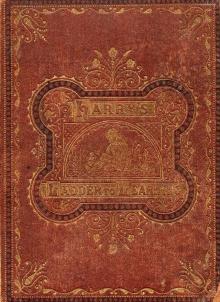 Harry's Ladder to Learning
Harry's Ladder to Learning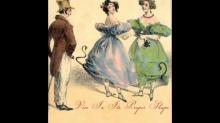 Vice in its Proper Shape
Vice in its Proper Shape_preview.jpg) Promise (the curse)
Promise (the curse) The First Sexton Blake
The First Sexton Blake Golden Moments
Golden Moments Hildebrand; or, The Days of Queen Elizabeth, An Historic Romance, Vol. 2 of 3
Hildebrand; or, The Days of Queen Elizabeth, An Historic Romance, Vol. 2 of 3 The Ice Queen
The Ice Queen Phebe, the Blackberry Girl
Phebe, the Blackberry Girl Stoned Immaculate
Stoned Immaculate Hildebrand; or, The Days of Queen Elizabeth, An Historic Romance, Vol. 3 of 3
Hildebrand; or, The Days of Queen Elizabeth, An Historic Romance, Vol. 3 of 3 The Wonder of War on Land
The Wonder of War on Land Breaking Bailey
Breaking Bailey The Little Girl Who Was Taught by Experience
The Little Girl Who Was Taught by Experience The Popular Story of Blue Beard
The Popular Story of Blue Beard The Life Savers: A story of the United States life-saving service
The Life Savers: A story of the United States life-saving service Eunuchs and Nymphomaniacs
Eunuchs and Nymphomaniacs Hildebrand; or, The Days of Queen Elizabeth, An Historic Romance, Vol. 1 of 3
Hildebrand; or, The Days of Queen Elizabeth, An Historic Romance, Vol. 1 of 3 Kitty's Picnic, and Other Stories
Kitty's Picnic, and Other Stories Two Yellow-Birds
Two Yellow-Birds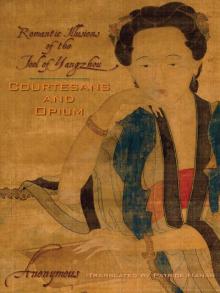 Courtesans and Opium
Courtesans and Opium The Emigrant's Lost Son; or, Life Alone in the Forest
The Emigrant's Lost Son; or, Life Alone in the Forest Toots and His Friends
Toots and His Friends Fast Nine; or, A Challenge from Fairfield
Fast Nine; or, A Challenge from Fairfield Ned Wilding's Disappearance; or, The Darewell Chums in the City
Ned Wilding's Disappearance; or, The Darewell Chums in the City A Picture-book of Merry Tales
A Picture-book of Merry Tales The Trail of The Badger: A Story of the Colorado Border Thirty Years Ago
The Trail of The Badger: A Story of the Colorado Border Thirty Years Ago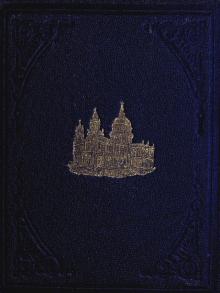 Peter Parley's Visit to London, During the Coronation of Queen Victoria
Peter Parley's Visit to London, During the Coronation of Queen Victoria The Rainbow, After the Thunder-Storm
The Rainbow, After the Thunder-Storm Arthur Hamilton, and His Dog
Arthur Hamilton, and His Dog The Story of the White-Rock Cove
The Story of the White-Rock Cove Grushenka. Three Times a Woman
Grushenka. Three Times a Woman Adventures of a Squirrel, Supposed to be Related by Himself
Adventures of a Squirrel, Supposed to be Related by Himself Falling in Love...Again
Falling in Love...Again The Colossal Camera Calamity
The Colossal Camera Calamity Child of the Regiment
Child of the Regiment Elimination Night
Elimination Night The Kingfisher Secret
The Kingfisher Secret Left to Ourselves; or, John Headley's Promise.
Left to Ourselves; or, John Headley's Promise. The Island of Gold: A Sailor's Yarn
The Island of Gold: A Sailor's Yarn Adventures of Bobby Orde
Adventures of Bobby Orde Twain, Mark: Selected Obituaries
Twain, Mark: Selected Obituaries When Love Goes Bad
When Love Goes Bad The Incest Diary
The Incest Diary Calling Maggie May
Calling Maggie May The Infidelity Diaries
The Infidelity Diaries Diary of an Oxygen Thief (The Oxygen Thief Diaries)
Diary of an Oxygen Thief (The Oxygen Thief Diaries) ARABELLA
ARABELLA The Eye of the Moon
The Eye of the Moon Dara
Dara THE ALTAR OF VENUS: The Making of a Victorian Rake
THE ALTAR OF VENUS: The Making of a Victorian Rake The Book of Death
The Book of Death The Book of David
The Book of David The Devil's Graveyard
The Devil's Graveyard The Book With No Name
The Book With No Name I Am A Lesbian
I Am A Lesbian Njal's Saga
Njal's Saga The Epic of Gilgamesh
The Epic of Gilgamesh Darling
Darling Tal, a conversation with an alien
Tal, a conversation with an alien Go Ask Alice
Go Ask Alice Aphrodizzia
Aphrodizzia The Campus Trilogy
The Campus Trilogy Augustus and Lady Maude
Augustus and Lady Maude Lucy in the Sky
Lucy in the Sky Sight Unseen
Sight Unseen Pleasures and Follies
Pleasures and Follies The Red Mohawk
The Red Mohawk A Fucked Up Life in Books
A Fucked Up Life in Books Chameleon On a Kaleidoscope (The Oxygen Thief Diaries)
Chameleon On a Kaleidoscope (The Oxygen Thief Diaries)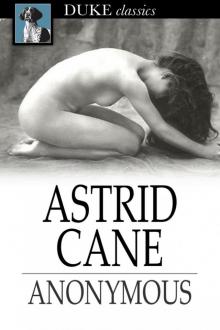 Astrid Cane
Astrid Cane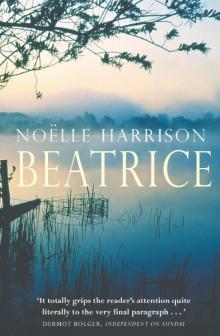 BEATRICE
BEATRICE The Song of the Cid
The Song of the Cid